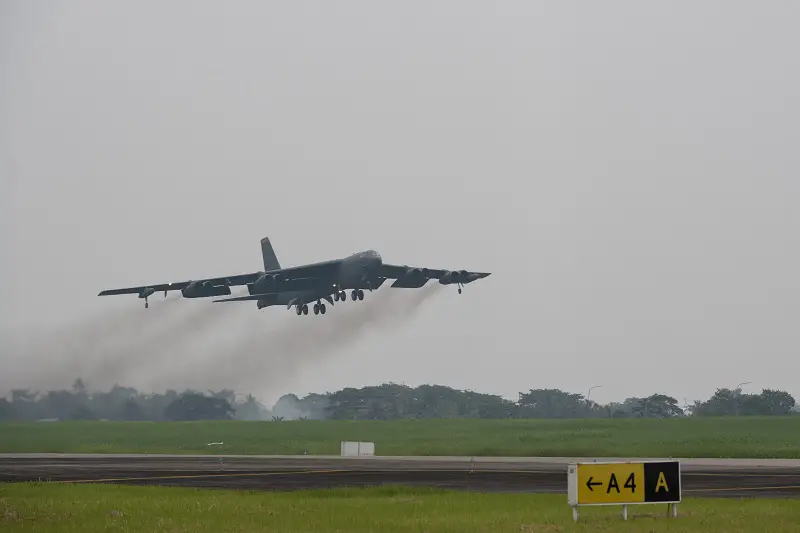More than 60 U.S. Air Force Airmen and two U.S. Air Force B-52H Stratofortress assigned to the 5th Bomb Wing from Minot Air Force Base, North Dakota, recently completed a bilateral interoperability exercise in Indonesia. The exercise, which lasted about a week and was supported by various U.S. Pacific Air Forces units, marked the first time U.S. Air Force B-52s landed on and operated from Indonesian soil. The exercise offered an opportunity to advance the ability of U.S. and Indonesian air forces to work together; allowed for the exchange of tactics, techniques and procedures specific to each nation’s aircraft; and promoted regional stability through cooperation, enhancing mutual understanding and an already strong partnership.
“It’s exciting to be a part of this historical milestone. Everyone on our team is very proud to have had a hand in this. Enhancing interoperability between U.S. and Indonesian air forces contributes to the long-term advancement of our nations’ shared interests. This was a great opportunity for us to train alongside our partners to bolster our collective ability to support a free and open Indo-Pacific,” said U.S. Air Force Capt. Justin Kinker, 23rd Bomb Squadron weapons officer and exercise team lead.

Two B-52 Stratofortress bombers from the U.S. Air Force made a historic arrival in Indonesia, marking the first deployment of these aircraft to the country. Although specific details about the deployment are currently limited, the arrival of the B-52s in Indonesia reflects the United States’ ongoing efforts to strengthen partnerships in the Indo-Pacific region, particularly in light of concerns surrounding potential conflicts involving China. While the recent deployment of B-52s to Indonesia is a significant milestone for both countries and the U.S. Air Force, it is worth noting that B-52s have previously trained alongside Indonesian Air Force aircraft.
The Boeing B-52 Stratofortress is an American long-range, subsonic, jet-powered strategic bomber. The B-52 was designed and built by Boeing, which has continued to provide support and upgrades. It has been operated by the U.S. Air Force (U.SAF) since the 1950s. The bomber can carry up to 70,000 pounds (32,000 kg) of weapons, and has a typical combat range of around 8,800 miles (14,200 km) without aerial refueling. Built to carry nuclear weapons for Cold War–era deterrence missions, the B-52 Stratofortress replaced the Convair B-36 Peacemaker. A veteran of several wars, the B-52 has dropped only conventional munitions in combat.
















